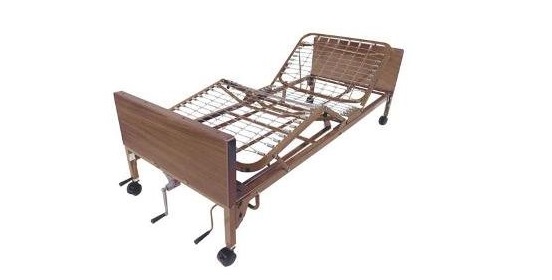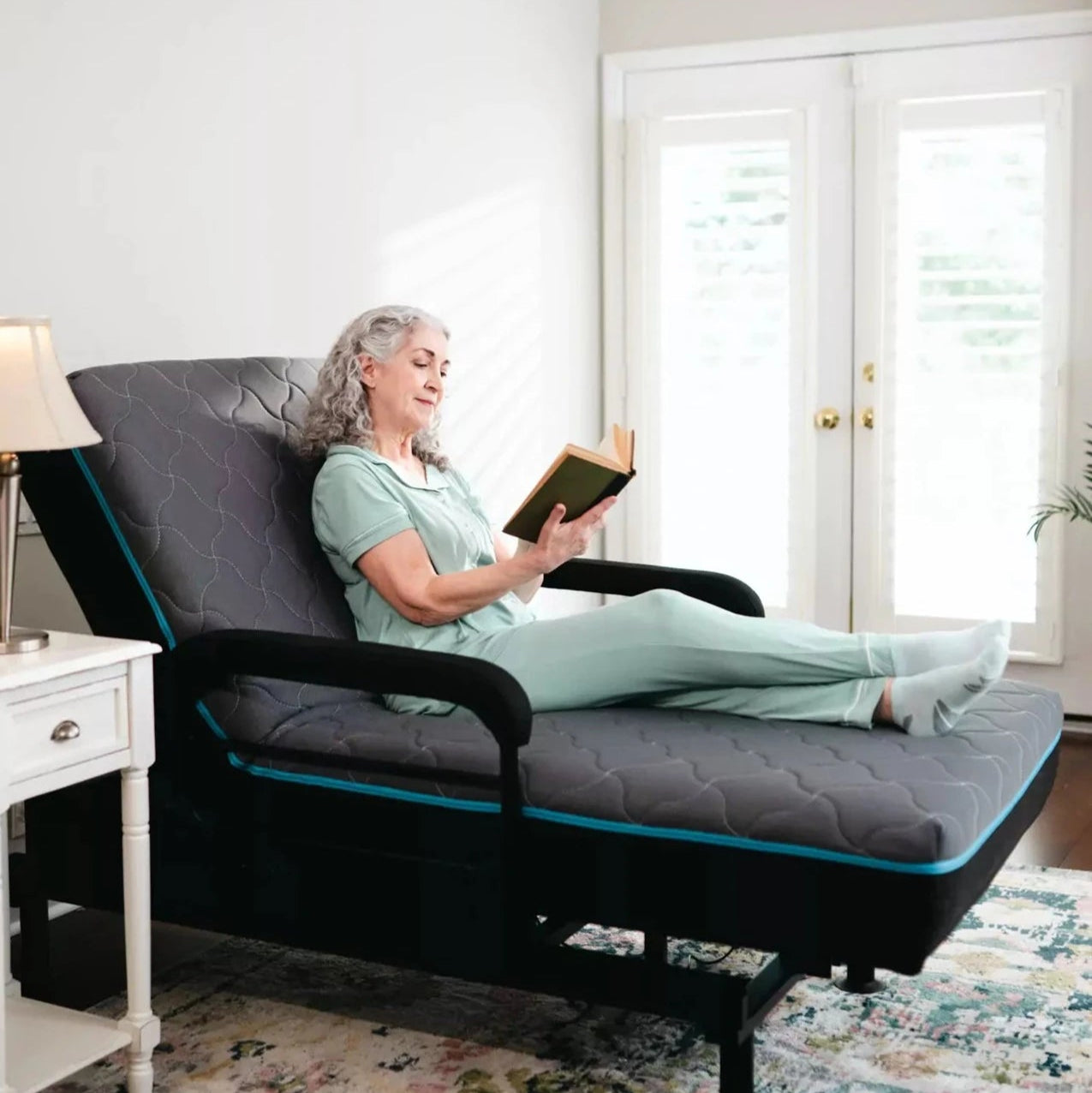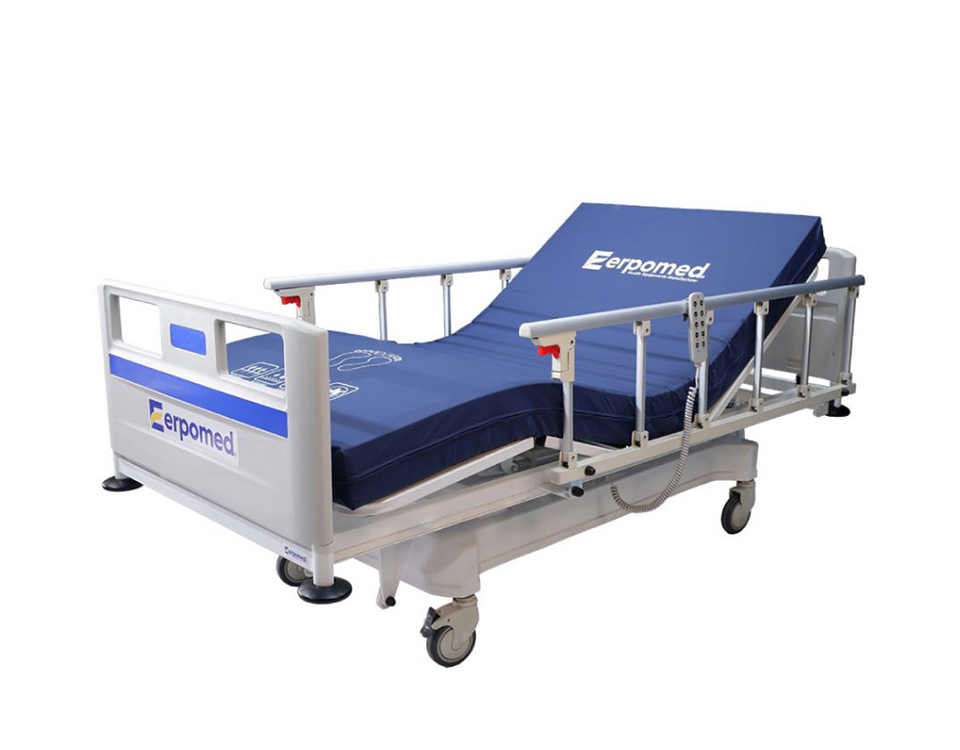Examine This Report about Hospital Beds For Home Use
Table of ContentsHospital Beds For Home Use for BeginnersThe Of Hospital Beds For Home UseFacts About Hospital Beds For Home Use RevealedSome Known Factual Statements About Hospital Beds For Home Use The smart Trick of Hospital Beds For Home Use That Nobody is DiscussingThe Ultimate Guide To Hospital Beds For Home UseSome Known Incorrect Statements About Hospital Beds For Home Use
All modifications are regulated electrically, which is simple to run and extremely accurate. It is appropriate for occasions where patients have actually limited flexibility or need to readjust their pose regularly. Next, we will certainly check out the features, uses, and Pros and Disadvantages of each sort of health center bed detailed. A manual health center bed is one of the most fundamental sort of healthcare facility bed, and all change functions are achieved with a hand-cranked gadget.These hand-cranked gadgets are normally set up at the foot or side of the bed, and the caretaker or person can readjust the height or tilt angle of the bed by trembling the handle. Considering that no electric components are called for, are typically less expensive than electrical healthcare facility beds, suitable for medical establishments or households with limited budgets.
Not known Details About Hospital Beds For Home Use
For people who need to change their stance or elevation often, hand-operated beds may not be convenient enough since each adjustment needs hand-operated operation. If the bed requires to be readjusted often, nursing personnel might require to invest more physical strength to run the hand-cranked device - hospital beds for home use. Guidebook beds are usually suitable for clients in the recovery period or occasions with low nursing needs
Usually, the modification of the back and legs is regulated by electric motors, while the overall elevation adjustment still needs to be done by hand. The function of this layout is to decrease costs and power consumption while keeping high functional benefit. Compared with hands-on hospital beds, semi-electric health center beds are easier in adjusting the back and legs, specifically for people that require to readjust their position often.
Considering that only some features depend on electrical energy, semi-electric health center beds consume less power during use. Since the general elevation still requires to be adjusted manually, it may not be as practical as completely electrical healthcare facility beds for clients that need to adjust the bed elevation often. Compared to hands-on hospital beds, semi-electric medical facility beds are slightly much more complex to run, needing users to understand the mix of electrical and hand-operated operations.
Electric health center beds have high adjustment precision and can be precisely readjusted to a certain angle and elevation according to the demands of individuals to provide the most comfortable support. All-electric hospital beds are typically furnished with a variety of extra functions, such as integrated scales, bed mattress pressure adjustment, etc, to fulfill the special needs of various clients.
The Best Guide To Hospital Beds For Home Use
A reduced bed is a particularly designed healthcare facility bed that can be adapted to an extremely low degree, typically just a few inches from the ground. The purpose of this layout is to lower the danger of patients falling from the bed, particularly for patients try these out that are at risk of falling, such as the elderly or individuals with limited movement.

The Only Guide to Hospital Beds For Home Use
give a care setting appropriate for children's height and physique, boosting the comfort and safety of kids. Some pediatric beds are also equipped with brightly tinted bed rails or animation designs to decrease the anxiety of youngsters in the healthcare facility environment. For children who need to remain in bed for a long period of time, pediatric beds are normally furnished with anti-bedsore mattresses, adjustable bed rails and other features to provide extensive care assistance.
The distribution bed is also geared up with postpartum healing features, such as cushion change, bed heating, and so on, to aid moms recuperate quicker. The extensive treatment bed (ICU Bed) is developed for the extensive treatment system (ICU) and has extensive tracking and nursing features. This kind of bed is usually outfitted with interfaces for a range of tracking tools, which can keep track of the person's essential signs in real time, such as heart price, blood stress, respiration, and so on.
Hospital Beds For Home Use Fundamentals Explained
The extensive treatment bed has a totally electric change function, which can rapidly adjust the angle and setting of the bed to meet the needs of various therapies and care. continue reading this The style of ICU bed thinks about the demand of rescue operation. The bed can be promptly adapted to the most ideal rescue pose and accept using rescue equipment.
It can successfully isolate individuals from the outside world and reduce the threat of infection transmission. Isolation beds are typically furnished with special bed curtains or sealing covers and linked to air filtration systems to keep the air around the bed tidy. Isolation beds are specially designed to stop the spread of pathogens from contagious patients and shield the safety of various other patients and clinical staff.
Seclusion beds are geared up with air purification systems that can filter microorganisms and particle issue in the air to maintain the air around the bed clean. Can additionally be readjusted to different positions.
The 10-Second Trick For Hospital Beds For Home Use
Wider and sturdier than a typical bed. Overweight, weight problems, client sizeDesigned for patients at threat of dropping out of read the full info here bed. Lower to the ground than a typical bed.

In a healthcare setup, choosing the appropriate bed can not just boost the efficiency of care, however also significantly boost person comfort and security. By recognizing the types and uses of these beds, healthcare facilities and family members caretakers can much better sustain and care for their patients.
Hospital Beds For Home Use Fundamentals Explained
HomeCare Medical Facility Beds, a department of DiaMedical United States, is committed to offering full transparency for its clients. Individuals can be overwhelmed by the different choices in lengthy term care items, and HomeCare Hospital Beds is devoted to streamlining this procedure, while making sure customers get the information and support they need.
Medicare Part B (Medical Insurance) covers healthcare facility beds as durable clinical equipment (DME) that your physician recommends for usage in your house. After you satisfy the Component B insurance deductible you pay 20% of the Medicare-approved quantity (if your provider approves job). Medicare pays for various sort of DME in different ways.
